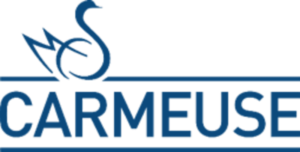Modern Workplace
Focused employees drive business success
Every aspect of your digital workplace should enable your employees to focus on their core tasks and add value to your business. The digital workplace isn’t an end in itself. It’s a tool for achieving the best business outcomes.
Our human approach to digital excellence
We believe in a human approach. That’s why we combine inspirational workshops and a focus on user adoption with business alignment and technical feasibility checks. Step by step, our experts work towards a full-fledged project with tangible results.
Secure employees, secure workplace
At the heart of any modern workplace is strong identity and access management (IAM): who is your end user, and what can they see, do or download?
Strong IAM through endpoint management, single sign-on, and multi-factor authentication not only guarantees security and compliance, but also ensures that your end users have access to the resources and data they need to do their jobs.
Empower your team to collaborate efficiently. Anywhere, anytime.
Rely on our deep-rooted experience with the Microsoft 365 suite of collaboration tools and the Power Platform to transform your people into productive and focused employees.
AI, your modern workplace sidekick
Microsoft Copilot as your personal assistant, OpenAI in the Power Platform, and an AI-powered chatbot to support your helpdesk: the possibilities seem endless and perhaps even overwhelming. Where do you start?
Dive into the future of work with our inspiring, expert-led workshops. Packed with demos and real-world use cases, you’ll discover what Copilot for Microsoft 365 has in store, and how to safely bring AI into your professional environment.
Everything you need to know
about the modern workplace
Hybrid work offers several benefits, including flexibility in work hours and location, improved work-life balance, increased productivity, cost savings, and an engaged workforce. It allows employees to find a balance between work and private life, benefiting from the collaborative and social aspects of an office environment as well as the convenience and autonomy of working remotely.
To set up a digital workplace, start by assessing your organization’s needs. Identify the tools and software you need for communication, collaboration, and task management. Ensure that your employees have access to the right hardware and internet connections. Implement security measures to protect data and information. Additionally, train your employees on how to use the new digital tools, to ensure a smooth transition.
Some of the best practices for a modern workplace include promoting flexibility in working hours and locations, using collaborative platforms and tools for efficient communication and collaboration, implementing cloud solutions for easy access to files and documents, fostering a positive company culture, and providing continuous training and support to employees to enhance their digital skills.
Cybersecurity is critical in hybrid work models. Some important measures include using strong passwords and two-factor authentication, regularly updating software and patches, encrypting sensitive data, implementing firewalls and antivirus software, limiting access rights to sensitive information, providing security awareness training, and conducting regular security audits.
Some popular collaboration tools for remote teams include Microsoft Teams, Slack, Google Workspace, Trello, Asana, and Zoom. These tools offer features such as chat, video meetings, file sharing, task management, and calendar integration to help teams collaborate efficiently, even when working remotely.
To maximize productivity while working from home, create a designated workspace, stick to a routine, set clear goals and deadlines, minimize distractions, take regular breaks to recharge, use productivity tools and apps, maintain open and effective communication with colleagues, and prioritize self-care to maintain work-life balance.
Hybrid work environments require technology solutions such as cloud-based collaboration tools, project management software, virtual meeting platforms, secure file sharing, and virtual private networks (VPNs) to enable seamless communication, collaboration, and access to resources for both in-office and remote workers.
When implementing collaboration tools, start by assessing your organization’s specific needs, identify appropriate tools based on features and scalability, create a comprehensive implementation plan, train and support employees, establish clear policies and communication channels, and regularly evaluate and optimize tool use for maximum effectiveness.
Remote work offers benefits like flexibility, reduced commuting time, and increased autonomy, while in-office work offers opportunities for face-to-face collaboration, a structured work environment, and better work-life balance. Assessing the specific needs and preferences of your organization and employees can help determine the best approach.
Remote work presents security risks such as unsecured Wi-Fi networks, phishing attacks, device theft, and unauthorized access to sensitive information. Mitigate these risks by enforcing strong security practices, educating employees about cybersecurity, implementing secure network connections, and using encrypted communication and file-sharing tools.
Implementing security protocols for remote work includes establishing secure network connections, using VPNs, enforcing strong password policies, implementing multi-factor authentication, encrypting sensitive data, conducting regular security training, monitoring and managing access privileges, and maintaining comprehensive security policies and procedures.
To optimize the digital workplace experience, focus on providing user-friendly interfaces and intuitive tools, ensuring seamless integration and compatibility across platforms, leveraging automation and AI technologies, prioritizing employee feedback, and continuously evaluating and improving the digital workplace environment based on user needs and emerging technologies.
Innovative technologies such as artificial intelligence, machine learning, cloud computing, the Internet of Things (IoT), and augmented reality can improve productivity, collaboration, and efficiency in the modern workplace. Keep up with emerging technologies and assess their potential for your organization’s specific needs to stay ahead in the evolving digital landscape.


